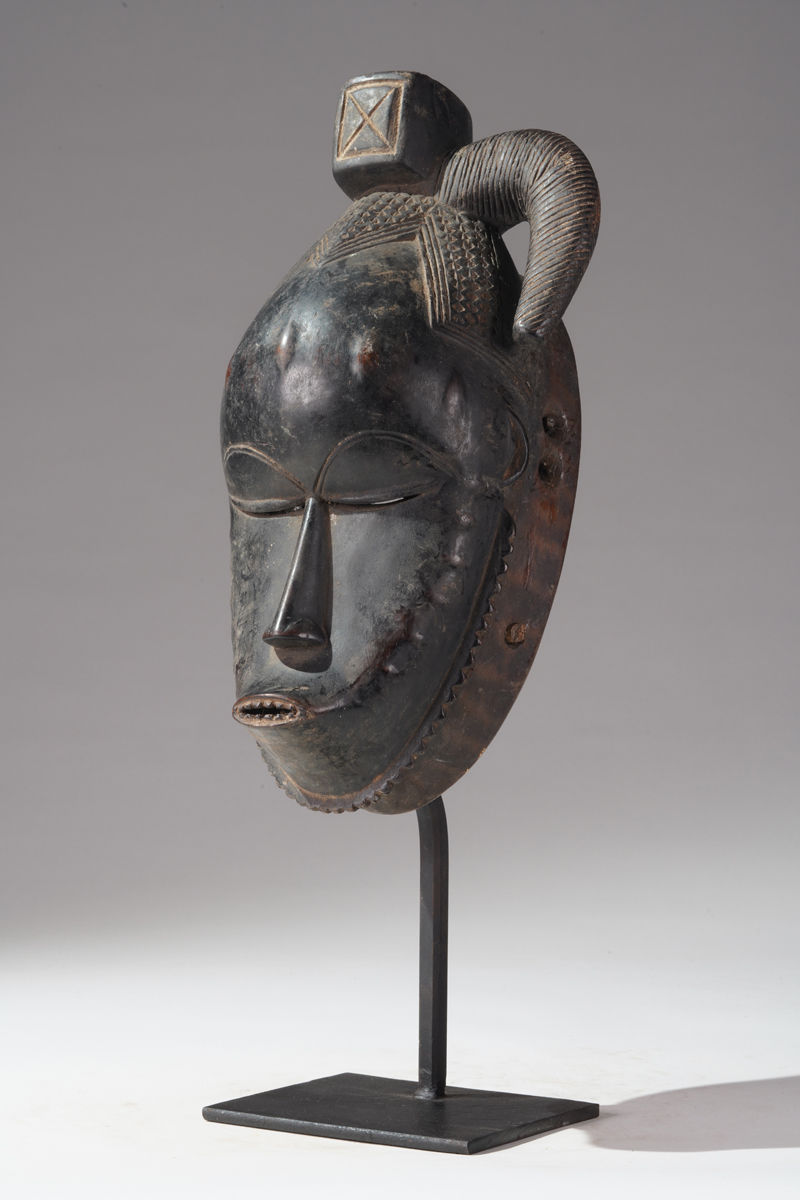 |
 A Guro mask, Ivory Coast, Zenula region. Inc. stand
The Guro people of central Côte d’Ivoire (Ivory Coast), particularly in the Zenoula region, are known for their highly refined and visually striking masks, which play a central role in ceremonial and spiritual life. These masks are most famously associated with the Zaouli, Gu, and Zamble traditions—each linked to specific spirits, myths, and performance contexts.
Guro masks are celebrated for their elegant, elongated features, graceful proportions, and ornate details. The faces typically have narrow chins, almond-shaped eyes, and finely arched brows, often complemented by elaborate hairstyles, horns, or animal elements carved into the crest. These additions are not merely decorative; they symbolize spiritual beings, animal totems, or moral virtues.
In the Zenoula region, Guro masks are most often used in public dances that accompany funerals, initiations, and community festivals. They are animated by music, drumming, and dance, during which the masked performer becomes a conduit for the spirit the mask represents. The most famous of these is the Zaouli mask, which is associated with a female spirit and is danced by men in a highly energetic, mesmerizing performance meant to entertain, honor the dead, and bless the community.
Another important figure is Zamble, a mythical beast combining features of the antelope, leopard, and crocodile—representing power, agility, and protection. Zamble masks are used to transmit messages of moral order and spiritual strength, often performed alongside Gu, a female spirit figure associated with beauty and virtue. The Guro believe that each mask holds the spirit of a supernatural being or ancestor, and thus requires careful ritual handling, consecration, and respect. The masks help mediate between the visible world of the living and the invisible world of spirits, ensuring balance, prosperity, and protection.
Art historian Susan Mullin Vogel writes:
“Guro masks do not merely embellish performance—they embody a sacred presence that demands attention, reverence, and moral reflection. Their refined elegance and layered iconography reflect a worldview in which beauty and spirituality are intertwined, and where art becomes the voice of the invisible.”
(African Art in the Cycle of Life, Susan Mullin Vogel, 1986)
Sotheby's
sold
Height: 32 cm / 42 cm incl. stand
Weight: 1,6 kg incl. stand |
 photo: wolfgang-jaenicke.com, for more information, please write us an e-mail with the identification number of the photo identification no. CAB02101.jpg
photo: wolfgang-jaenicke.com, for more information, please write us an e-mail with the identification number of the photo identification no. CAB02101.jpg |
|

